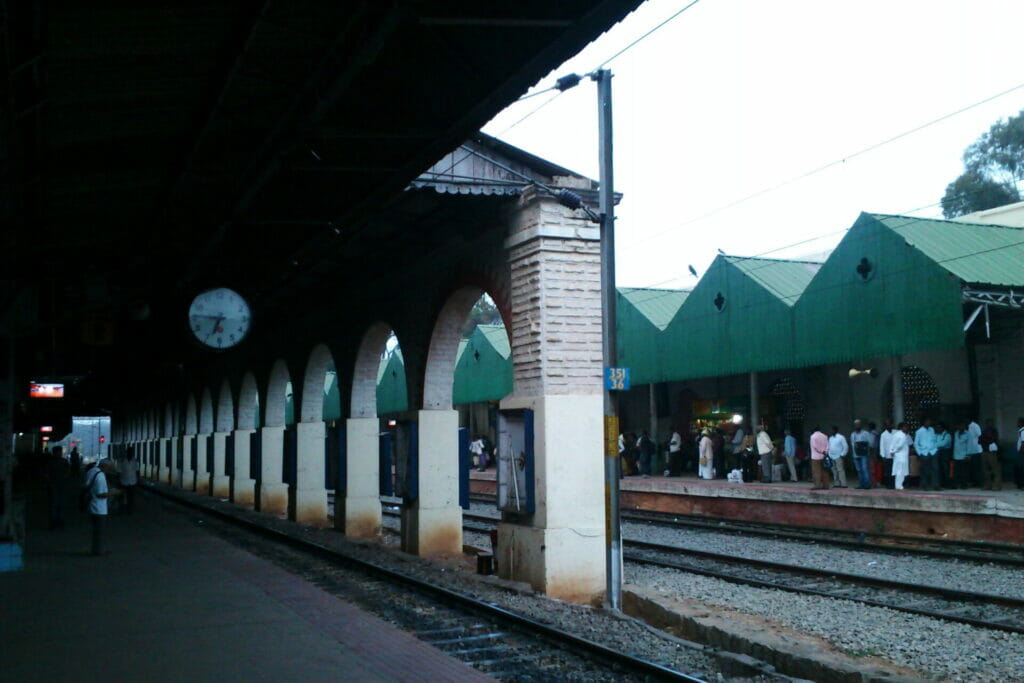In 2022, the South Western Railways (SWR) announced that the agency would undertake a complete revamp of the two main coaching terminals (the beginning and final points for trains), Krantiveera Sangoli Rayanna (KSR) and Yeshwantpur railway station, as well as the Cantonment Railway station, a major boarding point for several trains.
The stations would be modelled after the Sir M. Vishveshwaraya Terminal (SMVB) inaugurated in June 2022. The announcements repeatedly emphasise that these railway stations are going to be transformed into airport-like terminals.
Delayed promises
But airports take time and if SMVB is anything to go by, three airport-like railway stations could take several years. Where railways are concerned, delayed promises are not new.
SWR began planning the SMVB station as the third coaching terminal for Bengaluru in 2012, to reduce the burden on KSR and Yeshwantpur railway stations. It took three years for the project to be greenlit and was supposed to be completed by 2019.
The railways missed the deadline and indeed had to redesign aspects of the station due to technical flaws. The terminal was finally completed in 2021 and then lay unopened for over a year, apparently so that it could be inaugurated by Prime Minister Narendra Modi. Times of India has a detailed report on the timeline of the station. Such delays also cost the railways and consequently the public financially.
Meanwhile, the other three railway stations have also seen more delays in revamping than any actual revamping itself. Rail activists and travellers have been asking for improvements in KSR for years. The station does not have enough elevators to access foot over bridges to reach different platforms with heavy luggage, lacks adequate seating, emergency medical facilities, and ATMs. Clean toilets are a distant hope and recently the passenger subway was filled with sewage.
In 2018, SWR handed over the station’s running to Indian Railway Stations Development Corporation (IRSDC), a joint venture of the Rail Land Development Authority and Indian Railway Construction Limited, both run by the government.
Read more: An urban rail network: Light at the end for Bengaluru’s harried commuters!
In 2021, IRDSC was abruptly shut down and KSR was handed over to the General Manager of the Bengaluru zone, SWR. During its three year tenure, IRSDC achieved little but reportedly planned several projects and was waiting for permissions from the railways. Nearly two years on, it is not clear if any of these planned projects have materialised under the SWR.
KSR’s congestion problems were to be solved by Yeshwantpur, Cantonment, and SMVB, but the delays in developing the latter stations have further hit the main city station. In 2019, SWR promised that most trains would originate or terminate in these three stations by 2022 to reduce the burden on KSR.
The railways department announced that SMVB would be ready by 2020, while Yeshwantpur would be converted into a “mega terminal” by 2022 at the cost of 120 crore and Cantonment would have four additional platforms within the same timeline, along with a suburban railway terminal for which 37.4 crores was already sanctioned.

Instead, SMVB was undergoing design changes while no new developments happened at Cantonment. Yeshwantpur was given a mini makeover at the cost of 12 crores in 2021. This included additional AC rooms, an amphitheatre, wide access roads and parking facilities, landscaping, and inexplicably a large metal sculptural element at the entrance. What the SWR did not add was additional platforms or resolve signalling issues, so that more trains could be shifted from KSR as per their promise.
Read more: A guide to traveling with pets on Indian Railways
While SMVB has finally become operational with 29 trains originating and terminating here, passengers face several difficulties accessing this station. None of the other railway stations have even really taken off yet.
The airport’s quick deliverables on projects
In contrast, the Kempegowda International Airport (KIA), which appears to serve as the aspiration for the railways, has made fairly steady progress on their project. As air traffic and passenger footfall increased, Bengaluru International Airport Limited (BIAL) began making plans for a second terminal at the airport.
The initial plans were created in 2015, architects hired in 2018, construction began in 2019 and Phase 1 was unveiled in 2022. BIAL claims that the airport will begin operations in 2023, though it is not clear when Phase 2 of the new terminal will be ready.
We must hope that the railways aspire not just for the airport’s look but also timeframe to complete these projects. Because where the airport currently sees around 16 million passengers annually and the new terminal can cater to 25 million more passengers, KSR city station in its current state caters to over 90 million people and Yeshwantpur to over 35 million people.
Railways information
- Visit this website if you want to reach out regarding queries on railways or email Shyam Singh , Div. Rly Manager at drm@sbc.railnet.gov.in, or call A.N. Krishna Reddy, Public Relations Officer, on 080-22874670.